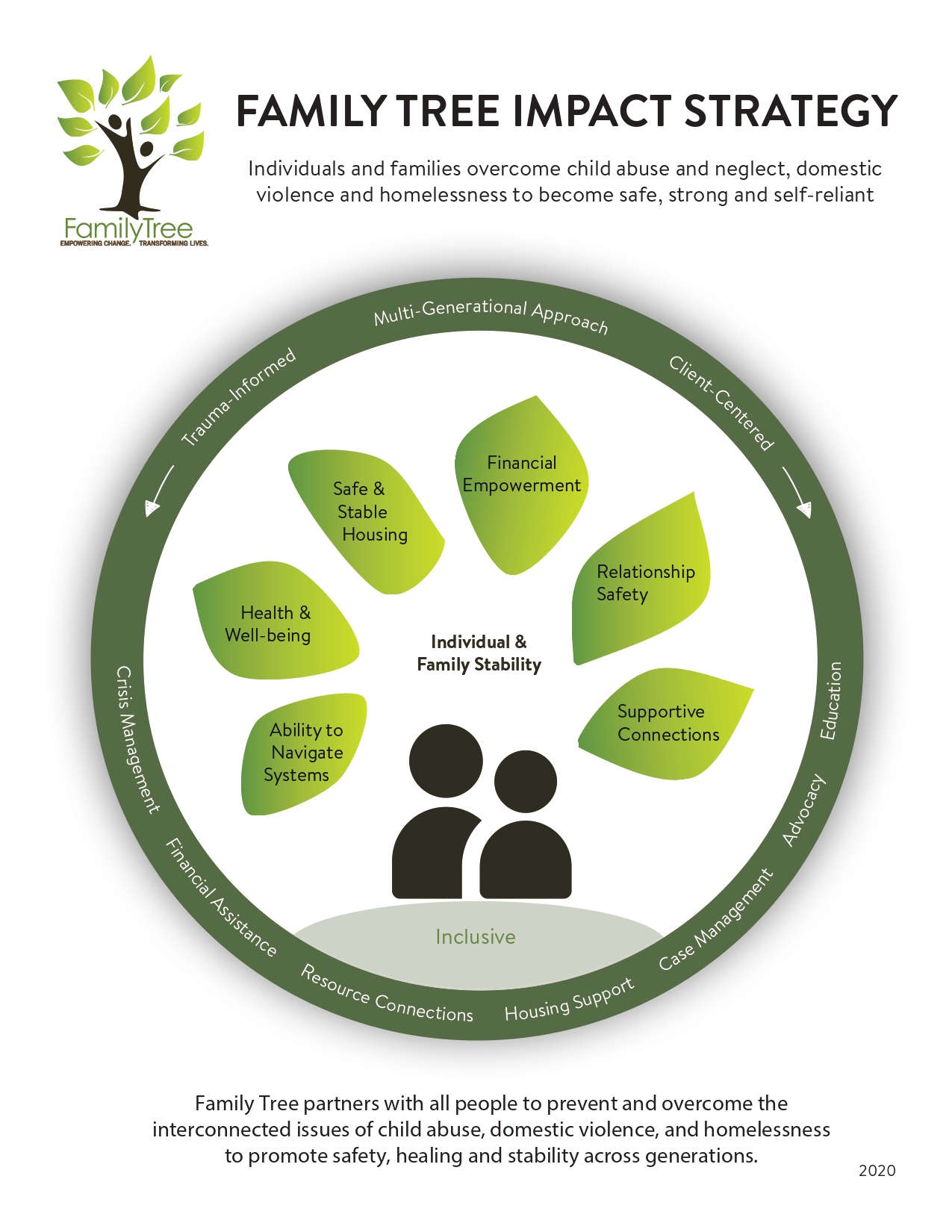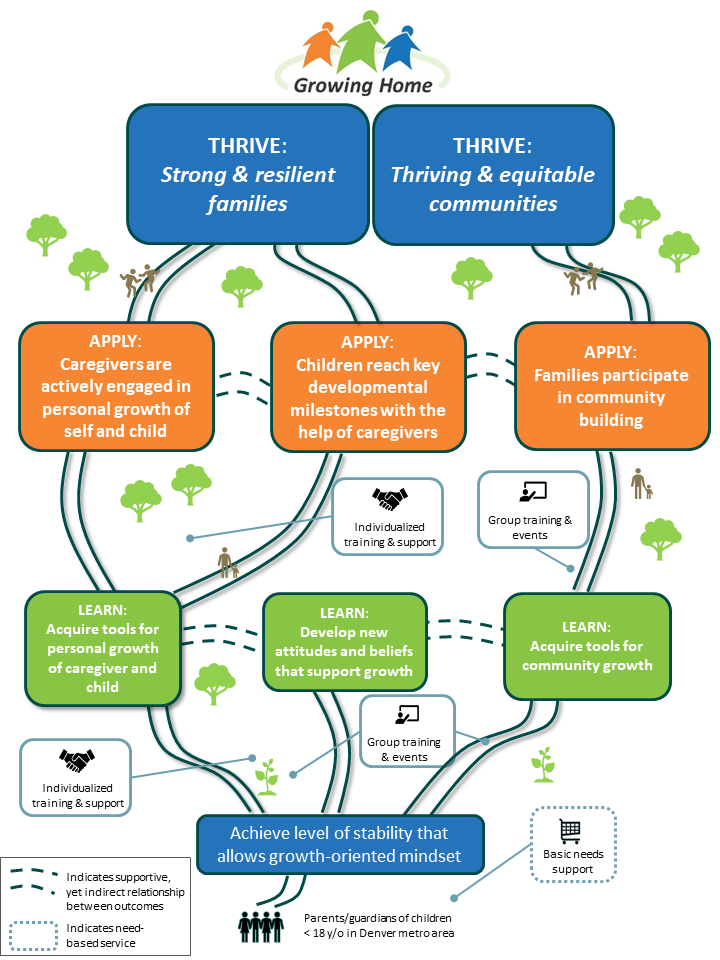Does your organization know where it wants to go? Are you moving with direction or just moving? It’s easy to stay busy all day, moving fast without getting anywhere, and getting sidetracked by things that make us feel like we are making progress, but aren’t actually leading us to where we want to end up.
“If you don’t know where you’re going, any road will get you there.” – Lewis Carroll, Alice and Wonderland.
Using an Impact Strategy can help clarify the direction you want to go and plan for how to get there. When you start articulating your desired direction, you give your organization a clear purpose. It will be easier to play the long game because you know that everything you are doing is leading somewhere you want to be.
In this article, we’ll explain the elements that make up an Impact Strategy, provide you with examples to inspire your own Impact Strategy design and offer suggestions to avoid common pitfalls.
Elements of an Impact Strategy
Long-Term Outcomes
What impact do you hope to see in the long-term? What is the big change that will occur within the community you serve?
Example 1:
Family Tree is a nonprofit human services agency providing innovative, life-changing services designed to end child abuse, domestic violence and homelessness. The desired long-term outcome, or impact of this organization is to: 1. Prevent and overcome the interconnected issues of child abuse, domestic violence, and homelessness. 2. Promote safety, healing and stability for children and families.
Example 2:
Growing Home is a nonprofit organization dedicated to creating a thriving and equitable north Denver metro by filling a critical gap for families and children who are experiencing immediate and long-term barriers to stability and success. The organization seeks these two long-term outcomes: strong and resilient families who are part of thriving and equitable communities.
Short-Term Outcomes
What are the shorter-term results or outcomes of the work you are doing? These could be tangible results that you can show to other people to clarify how your work is making a difference. These are preconditions related to the long-term outcome your organization is focused on impacting.
Example 1:
In our family services example (Family Tree) there are 6 core outcome areas that this organization has identified: Health & Well-being, Supportive Connections, Relationship Safety, Ability to Navigate Systems, Safe & Stable Housing, Financial Empowerment. Within each of those, there are a set of tangible/measurable results so we know if we are achieving the desired outcome. For example, under Family Stability, one outcome is, “increased parenting skills for caregivers”.
Example 2:
At Growing Home, the short-term outcomes center on supporting families to achieve a level of stability to allow for a growth-oriented mindset, so that they may engage in learning and the application of that learning. Through their services and programs, they support participants to acquire new information, skills, and mindsets that set the stage for individuals and families to harness their strengths and take steps to grow as an individual and a family. For example, one specific short-term outcome is “increased knowledge and skills on how to set achievable goals.”
Tip:
It’s not uncommon to fall into the trap of measuring “vanity metrics” – those numbers that on the surface look and make you feel good about the work you’ve done, but don’t actually get you closer to achieving your mission. In an Impact Strategy, it’s important to make sure we are defining the right outcomes
Target Population
Who are you serving? Who is your key audience?
Run your current demographics to answer base questions like, what is the age, race/ethnicity, education level, family structure, etc. of our clients? Then flip the question, what are the defining characteristics to allow you to reach your defined outcomes or to address the “problem” you are trying to solve.
Example 1:
For Family Tree, the target population is individuals and families affected by child abuse, domestic violence and homelessness.
Example 2:
For Growing Home, the target population includes families with children under 18 years old residing in the Denver metro area.
Tip:
Often, we’ve found clients think they know who they are trying to serve but their target population was too broad. The Impact Strategy process will allow you to get super clear on who you are striving to serve (i.e. considering characteristics like age group, race, ethnicity, beliefs, etc.) to ensure you are tracking outcomes on those individuals specifically.
Core Components
What do you do to impact change? Some of you may know these as your program activities, interventions, core program components, or other actions necessary to bring about the outcomes you have named. These activities may be simple or complex, but the primary focus for our purposes will be the activities your program does to impact the outcomes.
Example 1:
Providing Case Management/Client Advocacy is one of the core services that Family Tree offers, which aligns with the outcome, “increased parenting skills for caregivers” and the overall impact to, “partner with all people to prevent and overcome the interconnected issues of child abuse, domestic violence, and homelessness to promote safety, healing and stability across generations.”
Example 2:
One-on-one coaching and individualized support is a core approach across Growing Home programs. As a participant-centered organization that makes great effort to build meaningful relationships with participants, coaching and individualized support offers Growing Home the opportunity to not only support learning, but also to walk alongside participants as they apply new skills, knowledge, and mindsets in their pursuit of goals (short-term outcomes).
Tip:
Think about what is essential for driving you to your set outcomes for your intended target population. In other words, if you took out one of your core services, could you still get to your set outcomes? If the answer depends, then this may be an optional service vs. a core service that you’d want most clients engaging in.
Assumptions
As you go through each of the tasks or activities, you will be operating with a set of beliefs or ideas underlying your thinking. These underlying thoughts are your assumptions, and assumptions explain both the connections between the preconditions for long-term change that occur in the early and intermediate stages of the change process, and the expectations about how and why proposed interventions will bring them about. These assumptions may be based on social science theory, best practices in your field, and your collective expertise and experience but have not yet been explicitly stated.
Example:
An organization like Family Tree or Growing Home might have assumptions such as, participants feel a base level of trust in engaging with a program team member. Or, when referrals are provided outside the organization, participants get the services they need.
Tip:
Without considering the assumptions, you’ll likely face more unforeseen difficulties that will set you back in program implementation. Ask yourself what are the factors that sit outside the scope of your organization’s control, but are still necessary for your intended target population to reach your outcomes. These assumptions can be flipped into great exploratory learning questions in your evaluation practice.
Impact Strategy Examples
While many impact strategies look different and vary in the style, elements and content, they all serve as a great tool to get entire teams, partners, and community to share a common vision and goal for targeted impact. See some of the other examples below to get inspired by seeing how other organizations are visually bringing their impact strategies to life:



